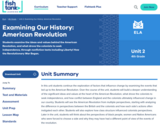
This exercise takes advantage of student's interest in Google Earth to teach some basic concepts about meandering rivers. Students prepare for class by reading about lowland rivers and/or hearing a lecture on them. They bring their own laptops to class or share with a partner or I take the entire class to the computer lab next door. In class they work through the worksheet and use Google Earth to take quantitative measurements of the rivers. They look at historic migration of meander bends and quantify river sinuousity, wavelength, amplitude, and radius of curvature of meander bends. They explore meandering bedrock rivers in Taiwan as a cool thought exercise in how that can happen. They end with looking at images from an area that they will have a field trip to during their next lab period. To keep people from flying through the exercise and getting bored, we do the whole activity in think-pair-share style. Students work on a location, answer the questions, and then we discuss it as a class.
(Note: this resource was added to OER Commons as part of a batch upload of over 2,200 records. If you notice an issue with the quality of the metadata, please let us know by using the 'report' button and we will flag it for consideration.)
- Subject:
- Biology
- Earth and Space Science
- Hydrology
- Life Science
- Material Type:
- Activity/Lab
- Provider:
- Science Education Resource Center (SERC) at Carleton College
- Provider Set:
- Teach the Earth
- Date Added:
- 09/11/2020
